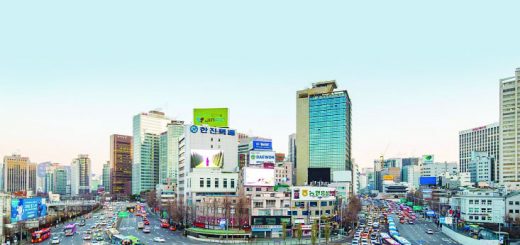Seven Billion and Counting: Are we in Danger?
Muhammed Shamaa
In October 2011, the world witnessed the birth of the seven billionth baby in Manila, Philippines. Danica May Camacho was welcomed to the world after much anticipation of who would enter history for completing that number. To many experts in demographics and population statistics, this birth is also a timely chance to think deeply about the rising number of Earth’s inhabitants, a number that might very well endanger our very existence on the planet. Just how will the Earth host the accelerating number of people and what will the impact be on us and on the planet.
How did we get here? According to an interesting infographic, the world population was 300,000 people in the year 1 AD. By 1804, the number rose to 1 billion, and from then on it started pacing insanely, especially after the industrial and the technological revolutions which were coupled with new inventions and innovations that have brought to humanity an unprecedented level of modern welfare, medical care, and prolonged living. These positive impacts upon the human life were not free of charge though. The industrial revolution also brought about the exhaustion of natural resources and the accelerated use of oil and gas for our everyday needs. “The unprecedented growth of world population during the 20th century, growing from 1.6 to 6.1 billion, greatly impacted all life forms and the entire natural environment on this planet,” says Joseph Chamie, Director of Research, Center for Migration Studies in New York. This is indeed costing the Earth dearly, and the future generations will have to deal with it, albeit dearly too.
The National Geographic Magazine mentions in its investigation on the topic that by 2045, the Earth will be hospitable to 9 billion people. Imagine what impact this number would have on our lives. Devastating wars might very well be ignited due to the lack in natural resources. The continuous increase in population numbers will definitely amplify the demand for water, an element which is essential to the human survival. This in its turn will contribute to destructive conflicts. “Competition for vital resources, in particular water, will challenge governments and create stress among countries that share vital resources,” says Chamie. The sparks of conflicts are already starting among countries in Africa and the Middle East, in which the Nile and the Euphrates rivers have been the foundation stone of millions living on their outskirts. For example, Turkey, Syria, and Iraq had binding agreements on the distribution of the waters of the Euphrates River. Nevertheless, there has been much disagreement among the three countries because of the decreasing level of coming water into Syria and Iraq, and the increasing number of dams being built on the river in Turkey.
Examining fertility rates also sheds more light on the problem. According to a report by the World Bank, “low-income countries still have the world’s highest birth rates.” Reasons for varying fertility rates between developing and developed countries differ according to their economic status and development levels, the report claims. “As a result of population pressures and limited resources, we are seeing a growing “demographic divide” in the world,” says Robert J. Walker, Executive Vice President of the Population Institute in Washington, DC . Walker continues saying: “On the one side of that divide are countries with low fertility rates, low mortality rates, and relatively high incomes. On the other side, there are countries with high fertility rates, high mortality rates, and persistent poverty.”
In countries like Brazil, Iran, and China, fertility rates have dropped since the 1980s and 1990s because of the policies these countries have adopted, such as the one-child policy in China. Also, developed countries have witnessed a sharp decline in fertility levels due to the social changes which have transformed attitudes towards traditional marriage and having children. In contrast to the developing countries, today’s developed world is witnessing an increasing number of older people who are enjoying higher standards of medical care, a phenomenon which is clearly witnessed in Japan and Italy. Therefore, the population gap between developed and developing countries is widening. Developed countries will very likely face a decrease in productivity and growth levels due to the rising numbers of older people who are no longer working, while developing countries will witness an explosion in population that will bring about tremendous social challenges, such as securing jobs, housing, and decent lifestyle for the youth. The question here is: Can we solve population issues through migration? Walker continues, “Migration will have only a limited impact. Between now and 2050, world population is projected to increase by 2.3 billion. While migration might resettle 200 or even 300 million of those people, the vast majority of new arrivals will likely stay where they were born.”
So what do we do to face this challenge? Is it only the duty of governments to impose laws and regulations to keep steady population numbers? Or do we personally have a vital role to play? Raising awareness on this issue is very important and might take a lifetime of generations in some cases, Chamie explains, “Raising awareness among people is extremely important in addressing population issues, but it may not be sufficient or effective in the near term.” On the other hand, there are various steps being taken by governments to tackle the issue of population concerns. For example, Australia has recognized the challenge of its increasingly aging people. The Australian Local Government Association created what was called the Australian Local Government Population Aging Action Plan 2004 – 2008 in order to “help build the capacity of local government to meet the specific opportunities and challenges of an aging population.” The action plan “provides a flexible and dynamic framework that builds awareness, encourages action, fosters partnerships, and improves access to information.” Also, countries such as South Korea, Brazil, and India are expanding vertically, building skyscrapers that can house millions of people to formalize a richer society, reduce costs and encourage commercial activities by getting people closer to each other.
The whole issue is a combination of climate change, population growth, social challenges, economics, growth and development, and many other factors. Seven billion people might be a heavy burden for earth to handle; however, with long term planning, wise action plans, awareness-building among future generations, fair distribution of wealth and natural resources, we will be able to live, coexist and utilize the planet’s abundant resources for our benefit. It is also high time that governments, in collaboration with specialized centers across the globe, took effective measure to deal with this issue seriously, encouraging people to actively participate for the betterment of humanity.












Recent Comments